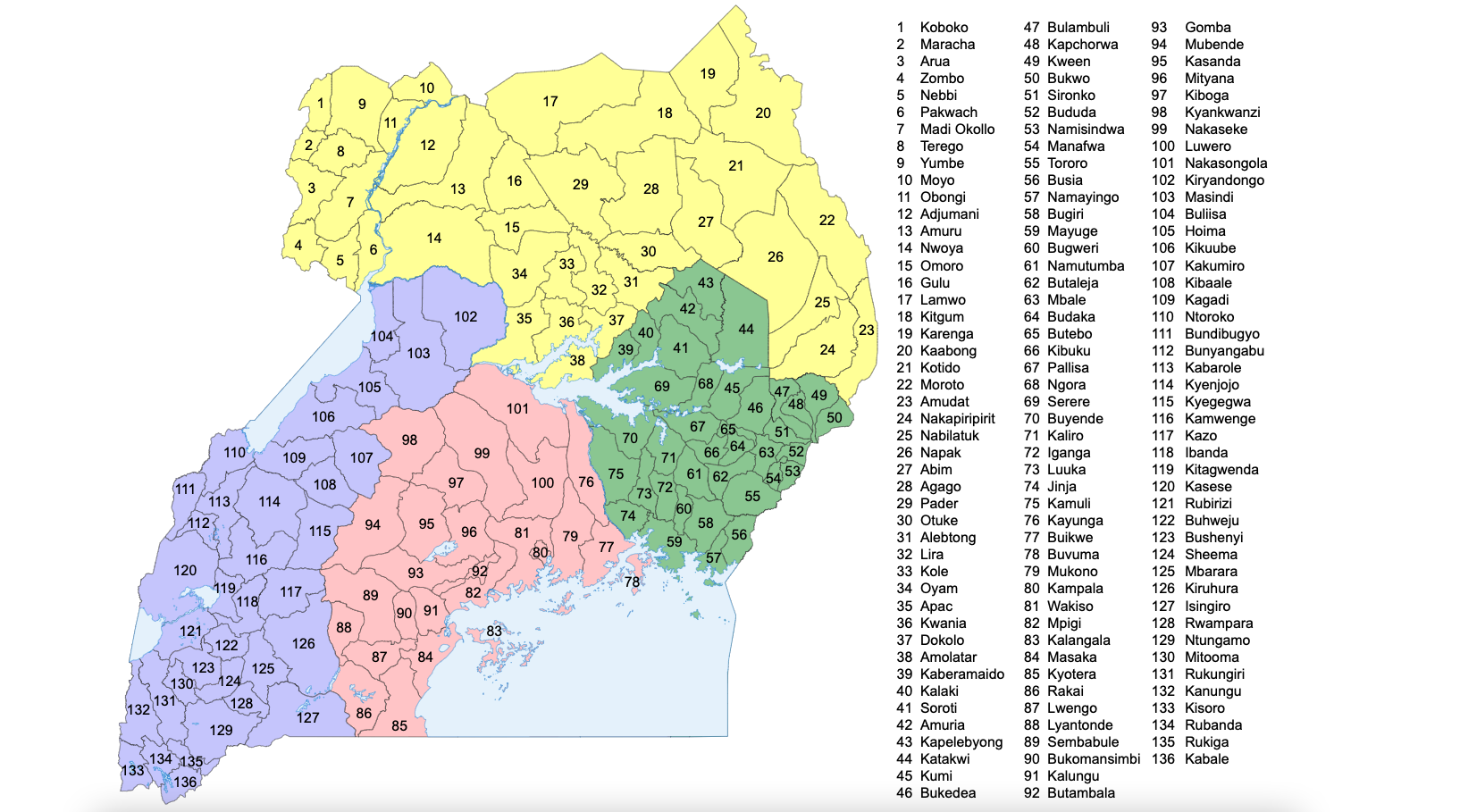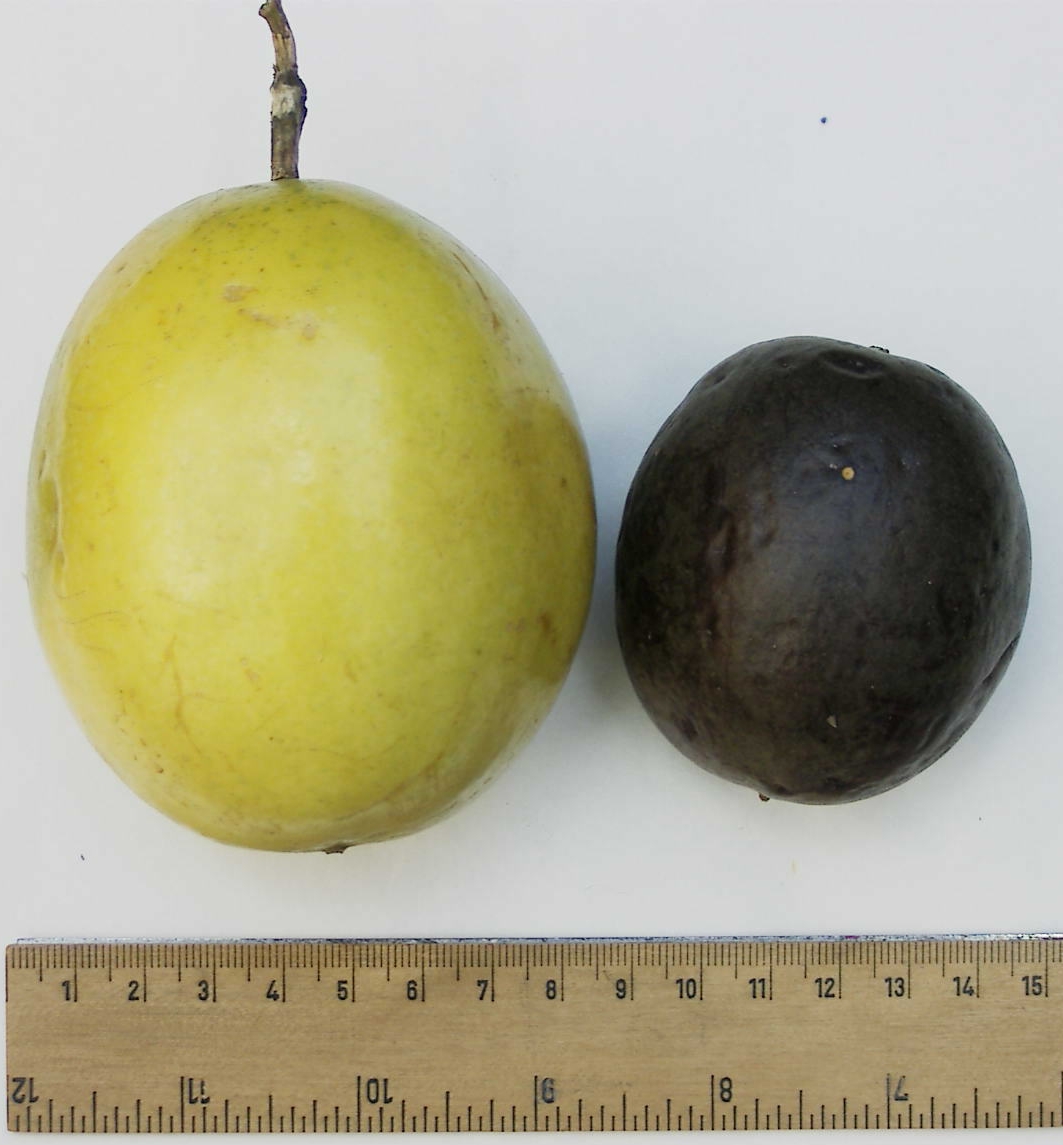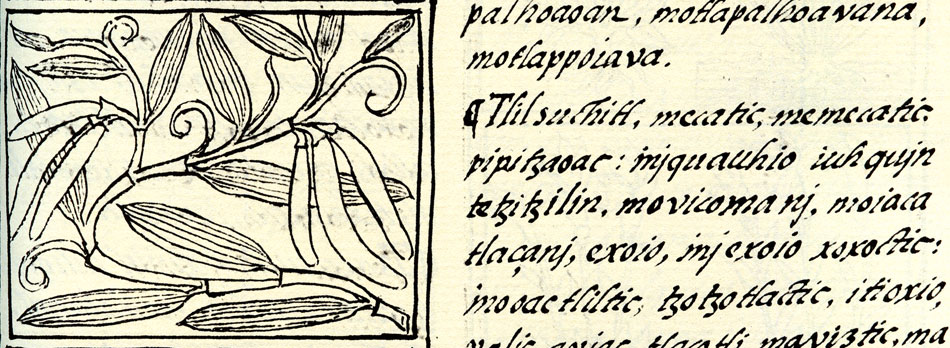|
Kayunga District
Kayunga District is a district in Central Uganda. It is named after its chief town, Kayunga. Geography Kayunga District is bordered by Amolatar District to the north, Buyende District to the northeast, Kamuli District to the east, Jinja District to the southeast, Buikwe District to the south, Mukono District to the southwest, Luweero District to the west, and Nakasongola District to the northwest. District headquarters Kayunga lies approximately northeast of Kampala, on an all-weather tarmac highway. Overview Kayunga District was carved out of Mukono District in December 2000. The district consists of two counties, Bbaale County and Ntenjeru County. It covers . Population In 2012, the district population was estimated at 358,700, up from 236,200 in 1991 and 294,600 in 2002. According to 2014 National Housing and Population census, the Kayunga population was about 368,064 with 181,920 (49%) males and 186,142 (51%) females. At that time the population density was 231 persons ... [...More Info...] [...Related Items...] OR: [Wikipedia] [Google] [Baidu] |
Districts Of Uganda
As of 1 July 2020, Uganda is divided into 135 districts plus the capital city of Kampala, which are grouped into four Regions of Uganda, geographic regions. Since 2005, the Ugandan government has been in the process of dividing districts into smaller units. This decentralization is intended to prevent resources from being distributed primarily to chief towns and leaving the remainder of each district neglected. Each district is further divided into Counties of Uganda, counties and municipalities, and each county is further divided into Sub-counties of Uganda, sub-counties. The head elected official in a district is the chairperson of the Local Council (Uganda), Local Council five (usually written with a Roman numeral V). Districts created since 2015 In September 2015, the Parliament of Uganda created 23 new districts, to be phased in over the next four years. ;Notes: See also * List of constituencies in Uganda * Regions of Uganda * Uganda Local Governments ... [...More Info...] [...Related Items...] OR: [Wikipedia] [Google] [Baidu] |
Bbaale County
Bbaale County is a county in the Kayunga District in Uganda. It occupies the northern half of the district. It contains four sub-counties. It is represented in the Uganda Parliament by Sulaiman Madada, who also serves as the State Minister for the Elderly and the Disabled. Sub-Counties * Bbaale Sub-county * Garilaya Sub-county * Kayonza Sub-county * Kitimbwa Sub-county Population The total population of the four sub-counties of Bbaale County, was approximately 123,150 as of November 2011. See also * Bbaale * Ntenjeru County Ntenjeru County is a county in the Kayunga District in Uganda. It occupies the southern half of the district. It contains four sub-counties and one municipality: Sub-Counties *Kayunga Sub-county *Busaana Sub-county *Nazigo Sub-county *Kangulum ... References External links Web Portal of Kayunga DistrictFirst Lady Advises Kayunga District Residents To Use Available Resources For Development Counties of Kayunga District Kayunga District { ... [...More Info...] [...Related Items...] OR: [Wikipedia] [Google] [Baidu] |
Buganda
Buganda is a Bantu peoples, Bantu kingdom within Uganda. The kingdom of the Baganda, Baganda people, Buganda is the largest of the List of current non-sovereign African monarchs, traditional kingdoms in present-day East Africa, consisting of Uganda's Districts of Uganda, Central Region, including the Ugandan capital Kampala. The 14 million ''Baganda'' (singular ''Muganda''; often referred to simply by the root word and adjective, Ganda) make up the largest Ugandan region, representing approximately 16% of Demographics of Uganda, Uganda's population. History of Buganda, Buganda's history includes unification during the 13th century by the first king, Kato Kintu, the founder of Buganda's Kintu dynasty, Buganda grew to become one of the largest and most powerful states in East Africa during the 18th and the 19th centuries. During the Scramble for Africa, and following unsuccessful attempts to retain its independence against British Empire, British imperialism, Buganda became the ce ... [...More Info...] [...Related Items...] OR: [Wikipedia] [Google] [Baidu] |
Sugar Cane
Sugarcane or sugar cane is a species of tall, Perennial plant, perennial grass (in the genus ''Saccharum'', tribe Andropogoneae) that is used for sugar Sugar industry, production. The plants are 2–6 m (6–20 ft) tall with stout, jointed, fibrous stalks that are rich in sucrose, which accumulates in the Plant stem, stalk internodes. Sugarcanes belong to the grass family, Poaceae, an economically important flowering plant family that includes maize, wheat, rice, and sorghum, and many forage crops. It is native to New Guinea. Sugarcane was an ancient crop of the Austronesian people, Austronesian and Indigenous people of New Guinea, Papuan people. The best evidence available today points to the New Guinea area as the site of the original domestication of ''Saccharum officinarum''. It was introduced to Polynesia, Island Melanesia, and Madagascar in prehistoric times via Austronesian sailors. It was also introduced by Austronesian sailors to India and then to Southern China by 500 ... [...More Info...] [...Related Items...] OR: [Wikipedia] [Google] [Baidu] |
Passion Fruit
''Passiflora edulis'', commonly known as passion fruit, is a vine species of passion flower native to the region of southern Brazil through Paraguay to northern Argentina. It is cultivated commercially in tropical and subtropical areas for its sweet, seedy fruit. The fruit is a pepo, a type of botanical berry, round to oval, either yellow or dark purple at maturity, with a soft to firm, juicy interior filled with numerous seeds. The fruit is both eaten and juiced, with the juice often added to other fruit juices to enhance aroma. Etymology The passion fruit is so called because it is one of the many species of passion flower, the English translation of the Latin genus name, ''Passiflora''. Around 1700, the name was given by missionaries in Brazil as an educational aid while trying to convert the indigenous inhabitants to Christianity; its name was ''flor das cinco chagas'' or "flower of the five wounds" to illustrate the crucifixion of Christ, with other plant components ... [...More Info...] [...Related Items...] OR: [Wikipedia] [Google] [Baidu] |
Watermelon
The watermelon (''Citrullus lanatus'') is a species of flowering plant in the family Cucurbitaceae, that has a large, edible fruit. It is a Glossary of botanical terms#scandent, scrambling and trailing vine-like plant, and is plant breeding, widely cultivated worldwide, with more than 1,000 variety (botany), varieties. Watermelons are grown in favorable climates from tropics, tropical to temperate climate, temperate regions worldwide for its large edible fruit, which is a Berry (botany), berry with a hard rind and no internal divisions, and is botany, botanically called a Glossary of botanical terms#pepo, ''pepo''. The sweet, juicy flesh is usually deep red to pink, with many black seeds, although seedless fruit, seedless varieties exist. The fruit can be eaten raw or pickled, and the rind is edible after cooking. It may also be consumed as a juice or an ingredient in mixed beverages. Kordofan melons from Sudan are the closest relatives and may be progenitors of modern, cul ... [...More Info...] [...Related Items...] OR: [Wikipedia] [Google] [Baidu] |
Millet
Millets () are a highly varied group of small-seeded grasses, widely grown around the world as cereal crops or grains for fodder and human food. Most millets belong to the tribe Paniceae. Millets are important crops in the Semi-arid climate, semiarid tropics of Asia and Africa, especially in India, Mali, Nigeria, and Niger, with 97% of production in Developing country, developing countries. The crop is favoured for its Agricultural productivity, productivity and short growing season under hot dry conditions. The millets are sometimes understood to include the widely cultivated sorghum; apart from that, pearl millet is the most commonly cultivated of the millets. Finger millet, proso millet, and foxtail millet are other important crop species. Millets may have been consumed by humans for about 7,000 years and potentially had "a pivotal role in the rise of multi-crop agriculture and settled farming societies". Etymology The word ''millet'' is derived via Old French ''millet, ... [...More Info...] [...Related Items...] OR: [Wikipedia] [Google] [Baidu] |
Maize
Maize (; ''Zea mays''), also known as corn in North American English, is a tall stout grass that produces cereal grain. It was domesticated by indigenous peoples in southern Mexico about 9,000 years ago from wild teosinte. Native Americans planted it alongside beans and squashes in the Three Sisters polyculture. The leafy stalk of the plant gives rise to male inflorescences or tassels which produce pollen, and female inflorescences called ears. The ears yield grain, known as kernels or seeds. In modern commercial varieties, these are usually yellow or white; other varieties can be of many colors. Maize relies on humans for its propagation. Since the Columbian exchange, it has become a staple food in many parts of the world, with the total production of maize surpassing that of wheat and rice. Much maize is used for animal feed, whether as grain or as the whole plant, which can either be baled or made into the more palatable silage. Sugar-rich varieties called sw ... [...More Info...] [...Related Items...] OR: [Wikipedia] [Google] [Baidu] |
Pineapples
The pineapple (''Ananas comosus'') is a tropical plant with an edible fruit; it is the most economically significant plant in the family Bromeliaceae. The pineapple is indigenous to South America, where it has been cultivated for many centuries. The introduction of the pineapple plant to Europe in the 17th century made it a significant cultural icon of luxury. Since the 1820s, pineapple has been commercially grown in greenhouses and many tropical plantations. Pineapples grow as a small shrub; the individual flowers of the unpollinated plant fuse to form a multiple fruit. The plant normally propagates from the offset produced at the top of the fruit or from a side shoot, and typically matures within a year. Description The pineapple is a herbaceous perennial, which grows to tall on average, although sometimes it can be taller. The plant has a short, stocky stem with tough, waxy leaves. When creating its fruit, it usually produces up to 200 flowers, although some larg ... [...More Info...] [...Related Items...] OR: [Wikipedia] [Google] [Baidu] |
Matooke
Matoke, locally also known as matooke, amatooke in Buganda (Central Uganda), ekitookye in southwestern Uganda, ekitooke in western Uganda, kamatore in Lugisu (Eastern Uganda), ebitooke in northwestern Tanzania, igitoki in Rwanda, Burundi and by the cultivar name East African Highland banana, are a group of starchy triploid banana cultivars, originating from the African Great Lakes. The fruit is harvested green, carefully peeled, and then cooked and often mashed or pounded into a meal. In Uganda and Rwanda, the fruit is steam-cooked, and the mashed meal is considered a national dish in both countries. Matoke bananas are a staple food crop in Uganda, Kenya, Tanzania and other Great Lakes countries. They are also known as the Mutika/Lujugira subgroup. The medium-sized green fruits, which are of a specific group of banana, the East African Highland bananas (''Musa'' AAA-EA), are known in the Bantu languages of Uganda and Western Kenya as ''matoke''. Cooking bananas have long been and ... [...More Info...] [...Related Items...] OR: [Wikipedia] [Google] [Baidu] |
Cassava
''Manihot esculenta'', common name, commonly called cassava, manioc, or yuca (among numerous regional names), is a woody shrub of the spurge family, Euphorbiaceae, native to South America, from Brazil, Paraguay and parts of the Andes. Although a perennial plant, cassava is extensively cultivated in tropical and subtropical regions as an annual crop for its edible starchy tuberous root. Cassava is predominantly consumed in boiled form, but substantial quantities are processed to extract cassava starch, called tapioca, which is used for food, animal feed, and industrial purposes. The Brazilian , and the related ''garri'' of West Africa, is an edible coarse flour obtained by grating cassava roots, pressing moisture off the obtained grated pulp, and finally drying it (and roasting in the case of both and ''garri''). Cassava is the third-largest source of carbohydrates in food in the tropics, after rice and maize, making it an important staple food, staple; more than 500 million pe ... [...More Info...] [...Related Items...] OR: [Wikipedia] [Google] [Baidu] |
Vanilla
Vanilla is a spice derived from orchids of the genus ''Vanilla (genus), Vanilla'', primarily obtained from pods of the flat-leaved vanilla (''Vanilla planifolia, V. planifolia''). ''Vanilla'' is not Autogamy, autogamous, so pollination is required to make the plants produce the fruit from which the vanilla spice is obtained. In 1837, Belgian botanist Charles François Antoine Morren discovered this fact and pioneered a method of artificially pollinating the plant. The method proved financially unworkable and was not deployed commercially. In 1841, Edmond Albius, a 12-year-old slave who lived on the French island of Réunion in the Indian Ocean, discovered that the plant could be hand-pollination, hand-pollinated. Hand-pollination allowed global cultivation of the plant. Noted French botanist and plant collector Jean Michel Claude Richard falsely claimed to have discovered the technique three or four years earlier. By the end of the 20th century, Albius was considered the ... [...More Info...] [...Related Items...] OR: [Wikipedia] [Google] [Baidu] |





